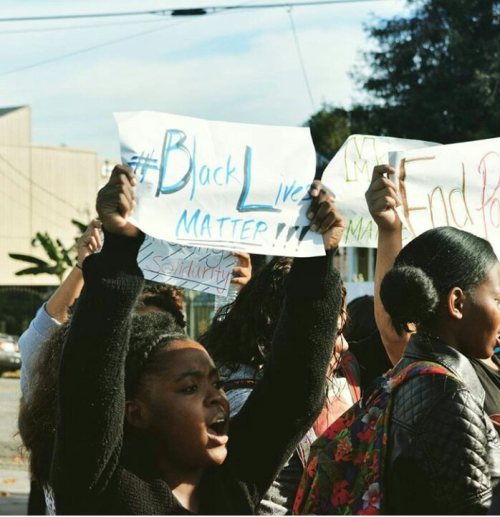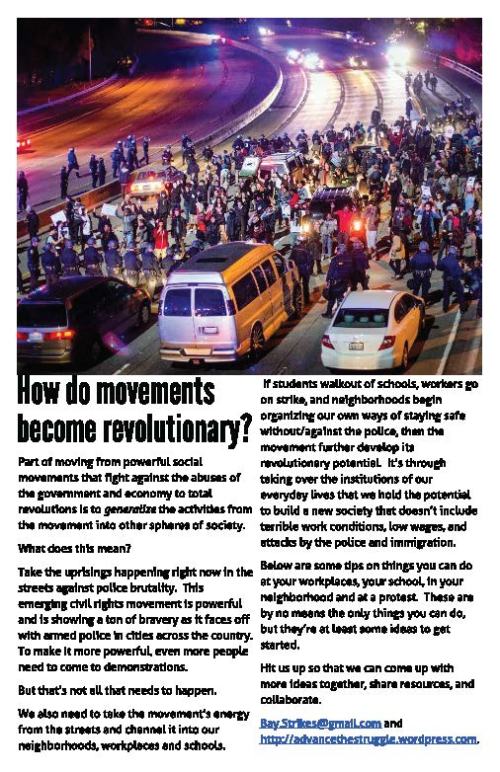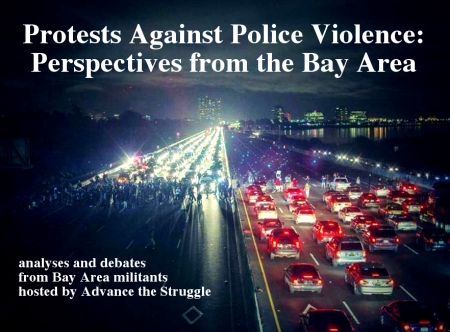
Justice for Oscar Grant: A Lost Opportunity?
On March 14th, Brooklyn had a rebellion against the NYPD killing of 16 year old Kimani Gray. He was shot in the back. The community of East Flatbush rose up and 46 people were arrested from the rebellion. As usual, the establishment is blaming the outside agitator for the rebellion. The usual forces who do this are politicians of color who have decade long roots in the established components of the “community,” accumulating political power to rise higher in the state power structure. These people are our political enemies for liberation.
In Oakland, the politicians of color, and the capitalist media, blamed outside white anarchist for the Oscar Grant rebellions. This was a joke. The anarchist could not pull off actions of such caliber. It was an organic rebellion made by largely the Black working class and dispossessed sections of society. It was youth of color who had enough. What did not exist in Oakland during the Oscar Grant rebellions, nor in Brooklyn with the Kimani Gray rebellions, is an organization that speaks to, and coordinates these particular rebellions. These rebellions are not to turn into non profit permitted protest, nor ideological stages for demagogues, but fluid anti-permitted actions that are organized by Black and West indie youth.
As austerity is forced on us and the welfare state is eroded, the state has become almost a solely disciplinary force; one that’s focus is to terrorize and police the predominately black and brown surplus populations of the city in order to ensure the smooth functioning necessary for capital accumulation. With this in mind, struggles around police violence in communities of color will increase in number and importance. We have written extensively about these experiences and the lessons we have drawn from them, and would encourage others to check it out.
Here is a 10 point program to propose to our NYC comrades for the development of such a movement. These are the crystallized lessons we learned from the Oscar Grant movement.
1) Coordinate unpermitted struggles in the streets in general terms. No permits.
2) In particular, have successful snake marches that can make quick turns at moments notice against the state.
3) Have a spatial analysis of your landscape in order to do this.
4) Have general assemblies in the street, to deepen the participatory character.
5) Play music in the streets that keeps the energy going.
7) Link with Ghettos and Barrios across NYC and beyond.
9) Politically struggle against the politicians of color, clergy and NGOs who will seek to co-opt this struggle for their own political capital.
10) Publicly advocate a revolutionary organization in these high times of struggle, to explain to the masses in struggle why spontaneous struggle is not enough.
Hopefully, this movement in NYC, coupled with an increase of organized rebellion that maintains an anti-statist character, armed with a vision of a building a revolutionary working class movement, a new force for liberation can emerge in NYC. With all that said, we would like to re-post Fire Next Time’s piece.
The following is a brief reportback from Will, a member of FNT who witnessed two of the last three nights of protests in East Flatbush following the police killing of 16-year old Kimani “Kiki” Gray.

The “outside agitators” are back!
The legend of the outside agitator has returned. Clowns like city councilman Jumanee Williams and the leadership of Occupy the Hood are fueling the myth that last night’s rebellions was led / caused by white people or outside agitators. I was there at last night’s rebellion, and let me tell you: there were fewer then 10 white people involved in a rebellion of hundreds of young Black militants. Last night was led by young Black militants. Period.
Continue reading →


















You must be logged in to post a comment.